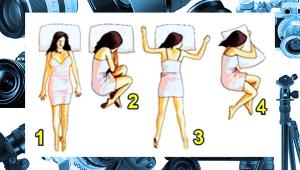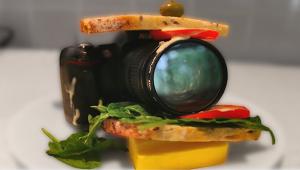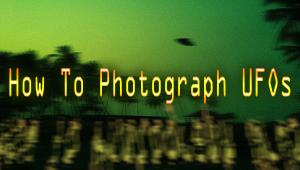AAAAAA = Americans Against All Abbreviations and Acronyms Used by Photographers

Not satisfied to assail those who abuse American English grammar, I now assault the bane of human communications: abbreviations. Yes, at the risk of being totally devoid of SEO considerations, I share with you today what’s wrong with the way photographers take verbal shortcuts. IMHO.
My first draft of this article originally appeared 10 years ago in Photo Industry Reporter (PIR) now known as Digital Imaging Reporter. I had to edit a few lines and refresh the vitriol, but some things just never change. LOL.
I’m not afraid to use an idiom here and there, rather than beat around the bush. After all, second only to clichés, idioms make the world go around, if you follow my drift, even if they are a dime a dozen. I am willing to use old chestnuts, after a fashion, because they sometimes help you get the picture faster than a jack rabbit, in the same way that certain well chosen expletives do, for instance, the expletive that you are bleeping under your breath at this very moment. I can’t hear it, and that’s good because ignorance is bliss.
But the one literary element I’ll rarely be found using is the abbreviation. Abbreviations are a form of verbal shorthand that allows us to communicate without any creativity, originality or imagination. I hate them because they are confusing and add nothing to our language, but most of all because they are hard to capitalize.
Acronyms are not much better. If you don’t know the technical difference between the two, here it is: the letters in an acronym create a pronounceable word, like RADAR or MADD, whereas the letters in an abbreviation are just a bunch of letters and are articulated individually, like ISO or DUI. One reason I hate both is that the unschooled often try to pronounce the unpronounceable, like DOT (Department of Transportation), DOF (Depth of Field) or APS (what was that one again?) and it sounds ridiculous. Try to pronounce “DMV” with a straight face and without SLRing.
Sadly, the photographic industry is replete with abbreviations, from AE to WB and from CES right up to WPPI. I believe that collectively they cause AC (Avoidable Confusion) for most consumers, including those who are DC (Digitally Competent).

Years ago we had a perfectly good set of names for camera exposure modes, including Aperture Priority and Shutter Priority. Then along came Canon around (1979 or so) with the labels Av and Tv which mean Audio Video and Television—I mean Aperture Value and Time Value. And therein lies my point: abbreviations sometimes do not migrate across platforms very well. Do you have a UPS—Uninterruptible Power Supply—or use United Parcel Service? Does HR mean Home Run or Human Resources? And while we’re talking baseball, does SB mean Stolen Base or the same as SOB? And BTW, don’t get me started on the bevy of obscure abbreviations spawned by TM (Text Messaging, Trademarks or Transcendental Meditation, depending on your POV).
In retaliation against a world that insists that it’s better to spit out staccato letters than to fully pronounce names of things, I am using SB for the first time as a Bully Pulpit and proposing the following new abbreviations. And yes, all of these can be applied under the rules of the ITSF (If The Shoe Fits) rulebook.
lbs
I love this one because it’s always small letters, like its lightweight brother “oz” or European cousin “cc.” What makes it better is that the letter “l” is so easily confused with the number “1.” In fact, I like this one so much I think I’ll just leave it alone. Well, almost. Camera makers, please realize that specifying the weight of a camera without including the weight of the battery is misleading and downright ignorant. LBS, then, by my new definition means “List Battery Specifications.”
DPF
Dreaded Purple Fringe. Commonly misconstrued as CA (Chromatic Aberration, not California) DPF is caused by camera manufacturers who try to put ten pound of pixels into a five pound camera. The result makes the edge between the clipped highlights and blocked shadows glow like a black light in a 1970’s college dorm room (yes, I’m speaking from experience here, on all counts).

DSC
Damn Small Camera. Legions of Japanese product managers refer to them as Digital Still Cameras so as to differentiate between them and their camcorder cousins, and for statistical reporting purposes, that’s fine—but have you ever tried to use one of those ultra-thin, all-LCD point-and-shoots with adult human hands? Where do you put your fingers? I saw one that said “TGIF” (Thumb Goes In Front) on the lens barrel.
IBIS
Is this reference to In-Body Image Stabilization an acronym? I mean, if you say it out loud it sounds like a bird call, or perhaps the name of the youngest cousin in Deliverance. In reality, however, it stands for I Believe I Shake. Why else would anyone need IBIS?
PC
Politically Correct to say this could mean Personal Computer or even Probable Cause if you are in law enforcement (or perhaps a felon), the original meaning of these two disparate letters of the photographer’s alphabet stood for Prontor-Compur, a type of leaf shutter formally deployed in view camera lenses. The term also applied to the flash connection compatible with these shutters, an interface called the PC Connection or PC Terminal, two names that in retrospect muddy the waters even more.
ISO
This one stands out because it’s totally deranged. In the beginning there was ASA, an abbreviation for American Standards Association. It was used in conjunction with a numeric value to identify the sensitivity of photographic film. ASA 25 (Kodachrome II for example) was slow while ASA 400 (Tri-X Pan) was considered fast.
In parts of the Europe, the numbers were different and they used the abbreviation DIN which denotes Deutsches Institut für Normung e.V. (German Institute for Standardization). Still understandable, no? But then along came digital cameras and they just had to upset the analog apple cart. Instead of trusty ASA or DIN, the DSCs opted for ISO. LMAO, right? Now, one might suspect that ISO could perhaps stand for International Standards Organization, but nooooo—that would be way too simple. Instead, ISO represents International Organization for Standardization. I cannot tell you why they didn’t use IOS instead of ISO, but perhaps they had ESP about Apple.
DPI
Now this abbreviation could be pronounced dippy but it’s anything but. It’s a specification that requires a tad of math knowledge to comprehend. It stands for Dots Per Inch, a defining characteristic of DMP (Dot Matrix Printers) that found new life in the universe of IJPs (Ink Jet Printers). Not to be confused with IGP, a term you can decipher on your own (the middle word is gotta) that is uttered by someone who drank too much iced tea and asks you to stop the car at the next gas station or wooded area.
PIA
Truth be told, a PR assistant who works (worked?) for a major camera manufacturer referred to Yours Truly as a PIA in an internal e-mail she accidentally sent to me. PIA isn’t the name of an Italian actress; it actually means Pain in the A-region, but I played dumb because a) I know that I probably am a PIA at times, and b) I never really wanted to write about their cameras, anyway.
Well, that’s all from me for now. I know I should throw in a few key words and maybe a couple octothorpes (look it up yourself). Oh, the sins we commit for SEO.
If you have some favorite abbreviations of your own, please share them with me ASAP. I won’t utter them in polite speech, of course, but I will wink and nod when I read them. In the meantime, DSL (Don’t Stop Laughing).
Epilogue
I said this last week, but it’s worth repeating. If you want to be a better photographer, take more pictures. Carry a camera everywhere you go and shoot even when you’re 100% sure the picture won’t turn out. Review all of your images with a critical eye and share them with others – and that includes posting the best on our Gallery. Subscribe to our newsletter (see sign-up form on our homepage) and bookmark Shutterbug as a Favorite on your browser so you can check back often. We’re in this for the same reason as you – we love photography, and we’re learning more about it every day.
—Jon Sienkiewicz
(As an Amazon Associate, Shutterbug earns from qualifying purchases linked in this story.)
















































